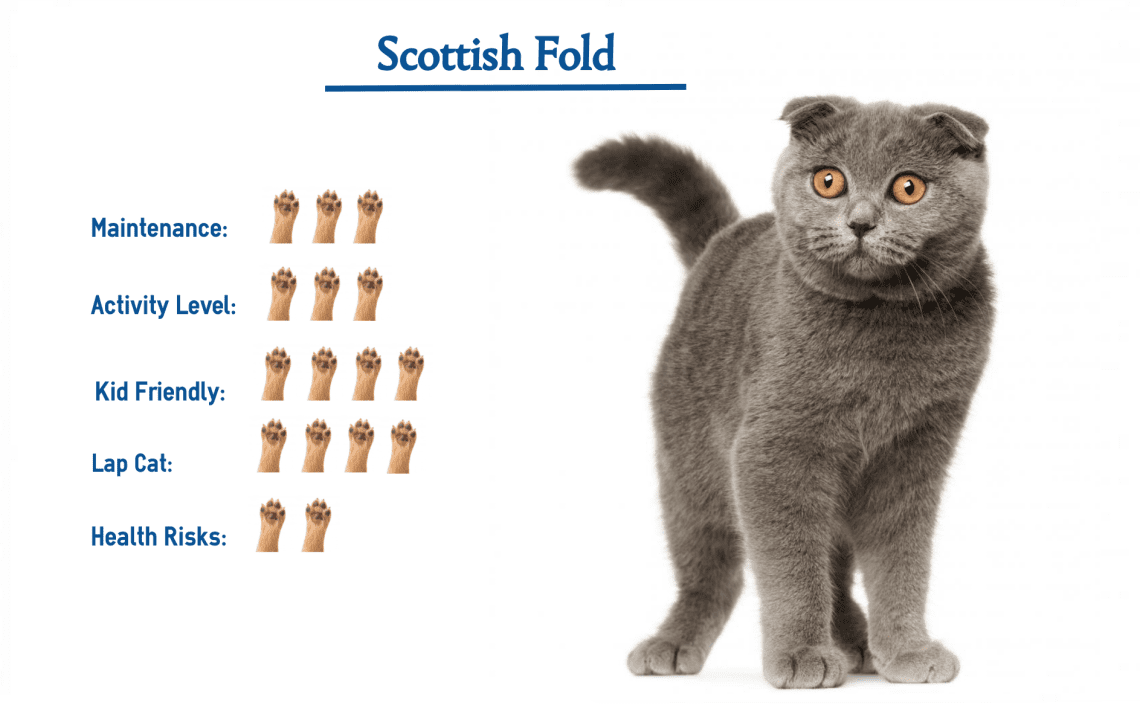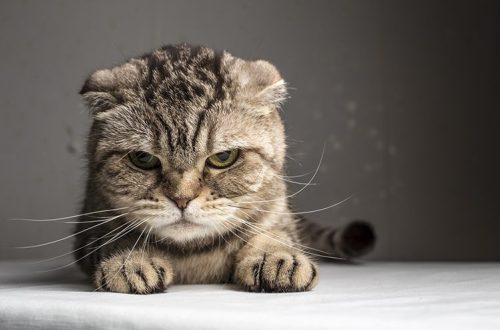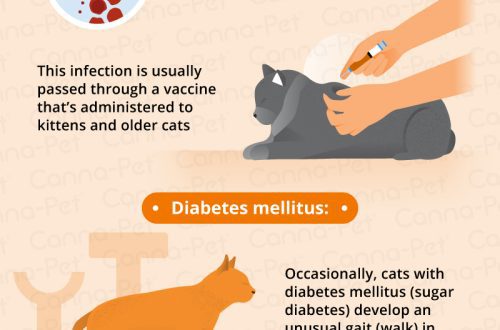
Health Features of Scottish Cats: What You Need to Know
Scottish fold cats are very charming, and ears pressed to the head make them especially cute. But before you take a kitten of this breed, you should know in advance about what Scots cats are sick with.
Scottish breeds include:
● Scottish folds (short-haired, lop-eared); ● Scottish Straights (short-haired, straight-eared); ● highland folds (long-haired, lop-eared); ● Highland Straights (long-haired, straight-eared).
Folded ears appear under the influence of the dominant lop-eared gene Fd, which affects not only the shape of the auricles, but also all cartilage tissues. Therefore, the main problem of Scottish breeds are joint diseases. For example, when crossing two lop-eared cats, offspring can be born with pathologies of the musculoskeletal system. This mistake can be made unknowingly by inexperienced Scottish breeders. To increase the likelihood of having healthy kittens, lop-eared cats should be crossed with straight-eared straights – owners of the recessive gene fd.
Diseases of Scottish cats
● Osteochondrodysplasia
This is an incurable disease in which the cat’s skeleton and cartilage do not develop properly. It usually occurs in animals with two genes Fd, but in rare cases it happens that cats with the right combination get sick Fd+fd. Therefore, it is recommended to regularly examine the pet in the veterinary clinic. If diseases of the joints are detected, the animal cannot be used for breeding.
Symptoms of OHD include lameness, deformed paws, crooked teeth, slow growth, shortened nose, problems with gait, jumping ability, short and thick tail, growths on the skin of the paws, etc. An accurate diagnosis should be made by a veterinarian after examination and radiography .
It is impossible to cure this disease, but you can make the life of a cat easier with the help of painkillers, anti-inflammatory drugs and chondroprotectors, as well as special nutrition with vitamin and mineral supplements.
● Cardiomyopathy
With a hereditary predisposition in Scots, hypertrophy of the heart muscle can occur, which leads to heart failure. In the early stages, there are no symptoms, so a problem can only be suspected when the animal begins to breathe heavily and cough during active movement. If the cat is lazy and moves little, then the owner can remain in the dark for a very long time. Therefore, it is advisable to monitor the activity of the pet and consult a doctor if shortness of breath occurs. X-ray, ECG and echocardiography will help to diagnose the disease in time and prescribe lifelong treatment.
● Brachycephalic syndrome
The specific structure of the skull in some breeds leads to obstruction of the upper respiratory tract. Scots, as well as Persians or Exotics, have a shortened muzzle. In most cases, the case is managed by slightly narrowed nostrils, but with severe manifestations of the syndrome, the cat simply cannot breathe through the nose.
Symptoms of brachycephalic syndrome are shortness of breath, snoring, difficult or noisy breathing, swollen tongue, bluish mucous membranes. If your pet has one or more of these signs, it’s best to take him to the vet. Over time, this disease progresses, so it is important to start treatment in a timely manner. You may even need surgery.
● Urolithiasis
This disease can affect cats of any breed, but Scots are at risk due to hereditary predisposition. Symptoms of urolithiasis can be pain during urination, refusal of the tray, blood in the urine, frequent urination, constant licking of the genitals, general weakness, decreased appetite.
If the owner suspects that the cat has urolithiasis, it is better to take the pet to the veterinarian. Ultrasound examination and tests will help to make an accurate diagnosis and prescribe timely treatment. It may include antispasmodic drugs and drugs to dissolve stones, antibiotics in the presence of infection, diet. In some cases, surgery may be necessary.
● Otodectosis, or ear mite
The special shape of the auricles leads to the creation of favorable conditions for the reproduction of ear mites. At the same time, it is difficult for the owner to notice that the pet has something wrong with the ears. But once the problem is identified, dealing with it will be easy. It will be enough to regularly clean the ears of the pet with the help of a special tool. It can be a spray, gel or drops. It may also be necessary to carry out treatment with acaricidal preparations. The name of the specific drug and the duration of treatment are prescribed by a veterinarian.
A number of diseases can threaten the health of Scottish Fold cats and other Scottish breeds. However, with timely access to a doctor, a pet can live a long and prosperous life, even if he is diagnosed with one of these diseases.
See also:
Scottish fold cat Scottish fold: breed description and character traits Scottish fold kittens: choice, nickname and care





